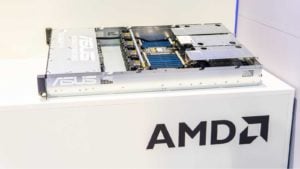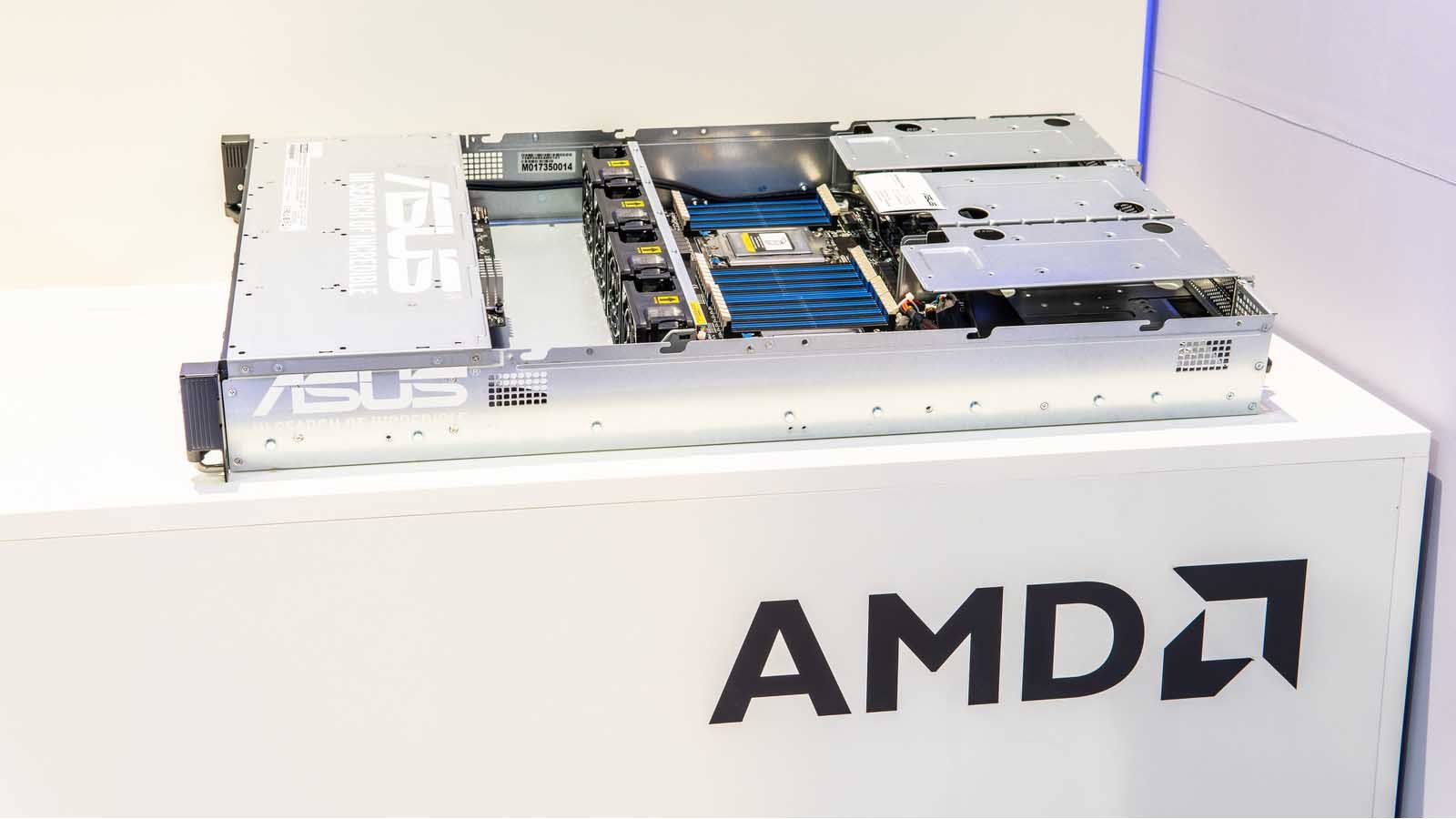In two previous columns, I’ve discussed the threats that Advanced Micro Devices (NASDAQ:AMD) is facing from its relatively weak artificial intelligence capabilities and its dependence on China. There are clear indications that both of those problems are intensifying, making AMD stock very risky at its current levels.

AMD is still far behind in the AI battle. That weakness appears to be meaningfully hurting its data center business. Tirias Research’s principal analyst, Kevin Krewell, calls AMD “a dark horse” in AI and says “its software stack is behind Nvidia’s (NASDAQ:NVDA) CUDA.”
He added that “two recent design wins with the Department of Energy’s Exascale computers should help it build out a more robust software stack, but machine learning seems to be a lower priority for AMD.”
Machine learning is an important means of facilitating AI. And as I’ve pointed out in a previous article, there’s evidence that Intel (NASDAQ:INTC) is ahead of both Nvidia and AMD in the AI battle.
In the IT world, there seems to be no dispute about the critical importance of AI to data centers. For example, Naveen Joshi, the founder and CEO of IT startup Allerin, wrote in a Forbes column that “data has become an asset and a significant part of almost every business operation.”
Importantly, Joshi added that, “leveraging AI in the data center in a feasible manner is necessary for every data-driven business.” Moreover, computer processors are the key to enabling AI. So clearly, given AMD’s weakness in AI, the outlook of its data center business is problematic at best.
The company’s deficiency in AI is probably a key reason behind the 13% decline in its computing and graphics revenue last quarter, compared with the previous quarter. AMD said that the drop “was primarily due to lower graphics processor sales.” Graphics processors are often used to facilitate AI.
By contrast, the revenue of Intel’s data center group rose to $7.2 billion in Q1 from $7 billion in Q4.
AMD did say that the number of server chips it had shipped in Q1 increased by at least 10% versus the fourth quarter. But it did not reveal whether its revenue from server chips had risen in Q1 compared with Q4.
Consequently, I believe that, although AMD shipped more server chips in Q1 than in Q4, it had to cut its prices for them because they are not as proficient in AI as competitors’ processors. Meanwhile, Intel has been sharply reducing the prices of its server chips. So all in all, AMD’s server business looks poised to weaken further going forward.
AMD’s China Revenue Is Likely to Sink
As I noted in my February 2020 column on AMD, Goldman Sachs estimated that about 26% of AMD’s 2018 revenue came from China. With the U.S. and China at each other’s throats, now is not a great time for an American company to get a very high percentage of its revenue from the Asian country. Indeed, the U.S. recently prohibited American companies from providing chips to Chinese telecom giant Huawei unless they get a special waiver.
There’s a good chance that Beijing could retaliate in some way against American tech firms, including AMD. In my February column, I noted that “AMD could also be vulnerable to China’s extensive efforts to build its own semiconductor sector.”
Those efforts appear to be bearing fruit, as TechRadar recently reported that China has produced a high-tech chip that looks poised ” to be used for anything from website hosting to VPN and cloud storage.” According to the website, the chip will likely be sold only in China but could also be utilized by Beijing’s “close allies.”
Given AMD’s high dependence on China, the new chip doesn’t bode well for AMD stock.
The Bottom Line on AMD Stock
AMD certainly has some positive characteristics, including the fact that its chips are smaller than those of Intel at this point, while its graphics chips are great for video games. And the company is still managing to sell many server chips to data centers.
But AMD’s AI deficiencies, combined with the vulnerabilities of its China business, make AMD stock extremely risky at this point. That’s especially true because the shares are trading at a relatively high forward price-earnings ratio (based on analysts’ average 2020 earnings per share estimate) of 51.5. Conversely, Intel’s forward P/E ratio stands at 13.6.
As of this writing, Larry Ramer owned shares of Intel. Larry Ramer has conducted research and written articles on U.S. stocks for 13 years. He has been employed by The Fly and Israel’s largest business newspaper, Globes. Larry began writing columns for InvestorPlace in 2015. Among his highly successful, contrarian picks have been Lyft, solar stocks, and Snap. You can reach him on StockTwits at @larryramer.
